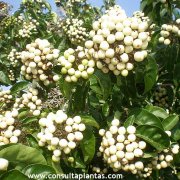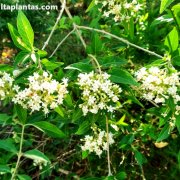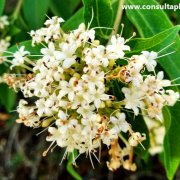Care of the tree Clerodendrum glabrum or Tinderwood |
|
The genus Clerodendrum, family Lamiaceae, includes 300 species of shrubs, trees, and climbing plants, mostly native to southern Asia and tropical regions of Africa. Some species are: Clerodendrum glabrum, Clerodendrum thomsoniae, Clerodendrum x speciosum, Clerodendrum ugandense, Clerodendrum fragrans, Clerodendrum trichotomum, Clerodendrum paniculatum. Common names: Verbena Tree, Tinderwood, Stinkleaf Tree, Smooth Tinderwood. This species is native to Tropical and Southern Africa. They are deciduous trees with a rounded crown that reach 12 meters (39.37 feet) in height. The leaves give off an unpleasant odor if they are crushed or crushed. The leaves are opposite, oval, and bend from the central axis. The scented flowers are white, pink or mauve, are bell-shaped and appear in rounded inflorescences. They can bloom in spring, summer and part of autumn. The fruits are yellowish-white berries and are also decorative. Tinderwood is used as isolated specimens especially in coastal gardens; it's also used for bonsai. Clerodendrum glabrum can grow in full sun or semi-shade exposure. Do not expose it to temperatures below 5 ºC (41 ºF). The soil can be a garden substrate with 20% compost or manure. Water regularly waiting for the soil to dry out; they resist not prolonged drought. Fertilize with compost in late winter and slow-release mineral fertilizer in spring and summer. Prune in late winter to keep the crown rounded. Verbena Tree is sensitive to the attack of mealybugs, whiteflies and mites especially if they suffer prolonged drought. Smooth Tinderwood propagates by seeds sown in summer or by cuttings in spring or summer. |
Images of the tree Clerodendrum glabrum or Tinderwood |
Find plants
Clerodendrum glabrum or Tinderwood | Care and Growing
© 2025 FavThemes



